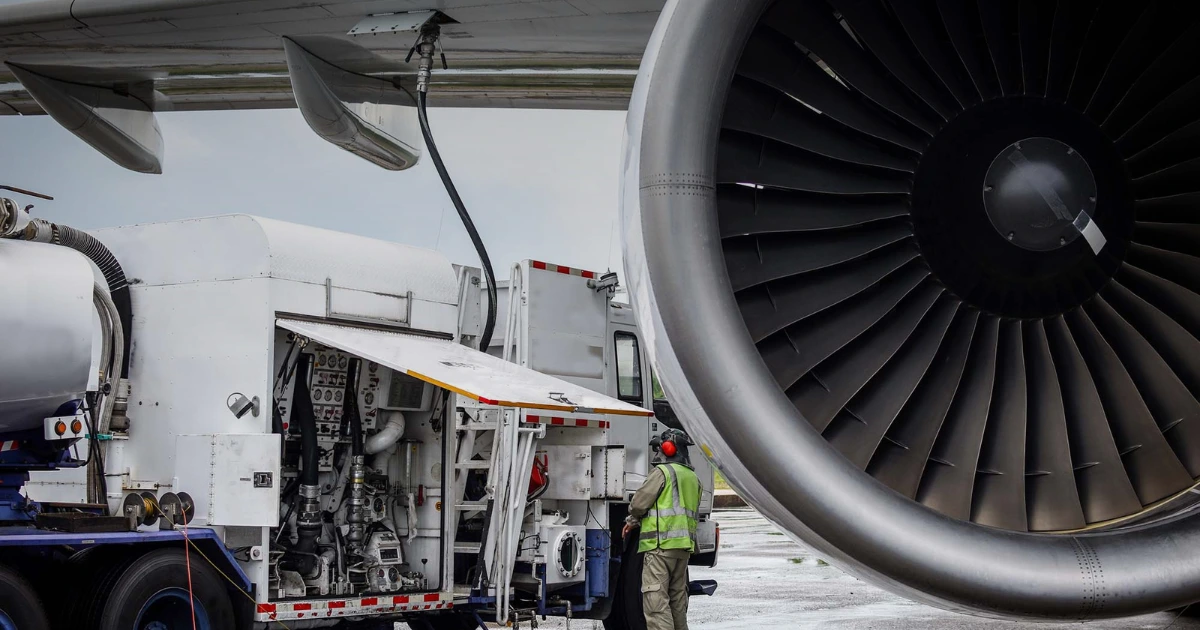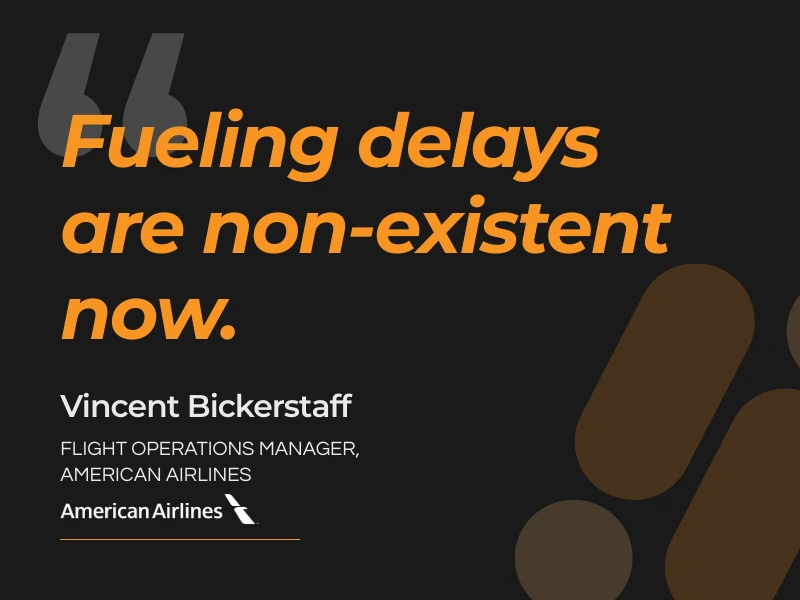
Fuel alone accounted for $37.27 per minute. When time slips, money follows.
Fueling is still one of the least digitized links in the airline value chain. Paper tickets, phone calls, spreadsheet reconciliations, and end‑of‑day files make it hard to act in the moment. Real‑time fuel data changes that: it turns fueling from a black box into a controllable lever across OTP, cost, and CO₂.

Even small delays compound. Across Europe, the average all‑causes delay per flight was ~17.7 minutes in 2023 (network departure), underscoring how fragile turnarounds remain. (Eurocontrol)
What does a minute really cost? Reference values widely used in Europe place airline delay costs between ~€59–€85 per minute (primary delay; higher with reactionary effects). These aren’t perfect for every operation, but they’re robust planning numbers that highlight why “fueling minutes” matter.
Takeaway: If fueling is invisible or late, you’re burning cash and schedule resilience at the same time.
Fuel is consistently among the biggest airline cost lines, ~29–31% of total operating costs depending on year. That puts a premium on eliminating overfuel and reconciliation errors. IATA
A practical benchmark: improving uplift accuracy by ~65 kg per flight (a realistic outcome from digitized, real‑time workflows) removes unnecessary weight and fuel burn. For a station handling 200 flights/day, that’s ~13 tonnes/day or ~4,745 tonnes/year of fuel avoided.
Using the ICAO CORSIA emissions factor (3.16 kg CO₂ per kg fuel), that equates to ~15,000 tonnes CO₂/year avoided — without touching routes or schedules. (i6 operations data; emissions factor verified below.) ICAO
Auditors and regulators will ask how you calculated CO₂. The good news: aviation uses a well‑established conversion. Burning 1 kg of Jet‑A/A‑1 produces ~3.16 kg CO₂, per ICAO’s CORSIA methodology and IATA guidance. Tie real‑time fueling data to this factor and you have verifiable, repeatable CO₂ reporting — flight by flight, station by station. ICAOIATA
Takeaway: Real‑time fueling isn’t just greener; it’s provably greener.
Real‑time fuel data becomes strategic when you can:
These capabilities don’t just prevent delays; they build trust with suppliers, airports, and regulators — and they travel well across your network.
These gains aren’t just theoretical. At Manchester Airport, an into-plane provider digitized its fueling workflows and cut delays by 92%, removing the need for manual entry across more than 200 daily flights. The impact was immediate: faster turnarounds, stronger on-time performance, and a safer, more reliable service for airline customers. Meanwhile, at London Heathrow, one of the world’s most complex hubs, a major U.S. carrier gained real-time visibility across multiple fueling providers. With every uplift tracked live, fueling delays were eliminated completely — allowing the airline to keep its schedule intact and focus on delivering the best possible passenger experience.

Real‑time fuel data is no longer a nice‑to‑have. It’s a strategic asset that helps airlines defend OTP, control a volatile cost base, and credibly reduce CO₂ — all with changes you can implement faster than fleet or network overhauls.